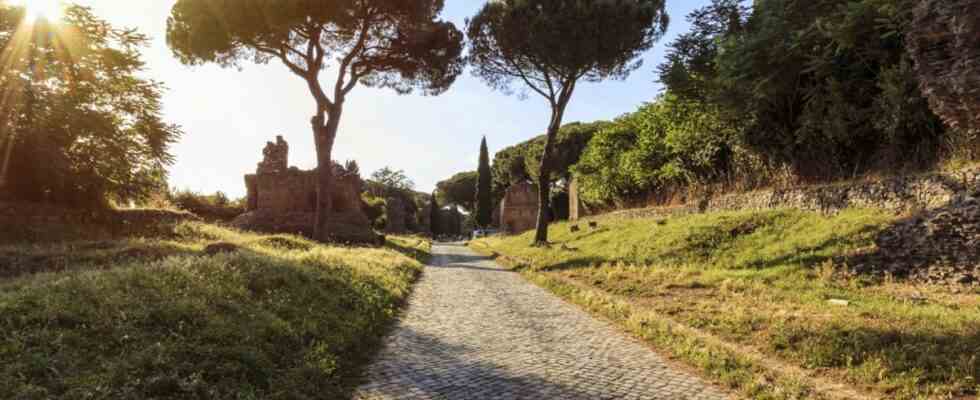The call for investment in infrastructure is a demand that has had a positive response from all political camps. Capital and employees benefit equally from a well-developed transport network. Sure, you have to spend money, but in the long run everyone benefits. A group of economists now want to find out exactly how long-term it will be, and they published their results in Journal of Comparative Economics released. First of all: The benefit is therefore actually very long-term.
The team led by the economist Carl-Johann Dalgaard from the University of Copenhagen has taken a close look at the famous road network of the Roman Empire. In doing so, it superimposed maps of the Roman transport network over today’s satellite images. Where there were important roads in ancient times, there are still traffic junctions today, and the courses of the old road network are still in use. More important, however, are the economic implications: Anyone who lives where there was a road 2000 years ago probably lives in a relatively prosperous area. The investments made by the Romans are apparently still paying off today.
The Romans covered their empire with a road network so their soldiers could march faster.
(Photo: imago stock&people/imago/Leemage)
To support their thesis, the scientists used the use of light at night as an indicator of economic activity. And indeed, today’s cities of Europe light up on the nocturnal satellite images along the Roman roads. “Since so much has happened in the meantime, a lot should have adapted to modern circumstances,” says Ola Olsson, professor of economics at the University of Gothenburg and co-author of the study. In reality, however, the concentration of economic activity is still based on the road layout of the Roman Empire: “Although the roads are long gone or have been built over.”
The construction of the first Roman road was by no means subject to the primacy of economy. Unsurprisingly, it was about the military. In order to be able to supply the army active in Campania more quickly with supplies during the second Samnite war, it was decided in 312 BC to build the Via Appia, a paved, weatherproof traffic route from Rome to Capua. In the following centuries, too, the expansion progressed, above all from a military-logistical point of view. The road network allowed the Romans to move their legions more efficiently.
In North Africa and the Middle East, the roads had no lasting effect
The economic effects only set in afterwards. Affiliated cities benefited from trade, others sank into insignificance. The authors illustrate this with Lugdunum, a Roman foundation from the first century BC. At that time, Vienne, about 30 kilometers to the south, was the political center of the region. However, the Roman provincial governor decided to make the new colony a hub – and a fabulous development began. Today Lugdunum is called Lyon and is the third largest city in France. Vienne is a small town with around 30,000 inhabitants.
This course even survived the turbulent late antiquity. “The fall of the Roman Empire would have provided an opportunity to readjust economic structures,” says Ola Olsson. Nevertheless, the urban structures have been preserved. Apart from the North African and Middle Eastern part of the empire, here the roads had no long-term impact on economic development – because they were no longer used. From the 4th century AD, camel caravans supplanted wheeled transport, eliminating the need for roads. While these in Europe were somewhat maintained or overbuilt, the Roman roads to the south and east withered and disappeared. “The streets became irrelevant,” says Olsson.

